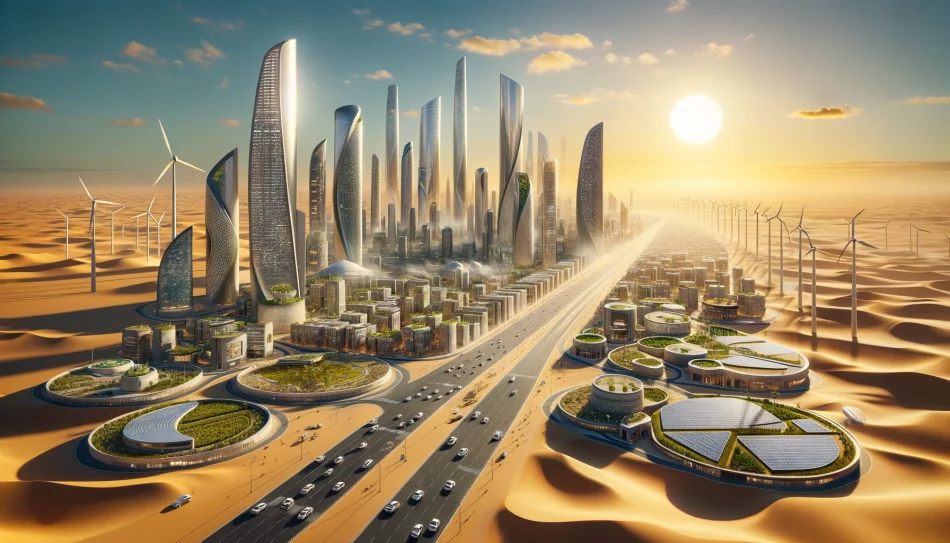The Sahara Desert (3,600,000 sq mi), often cited for its vastness, could indeed encapsulate almost the entire landmass of China (3,700,000 sq mi), or the United States (3,618,780 sq mi). This comparison not only highlights the Sahara’s immense size but also sparks curiosity about its potential for human habitation.
Terraforming, or the process of altering the environment to make it habitable for human life, emerges as a captivating solution to the world’s growing population and diminishing habitable land area. However, the feasibility and advisability of such an undertaking require a thorough examination.
This piece explores the potential for terraforming the Sahara Desert to support millions of inhabitants, analyzing both the opportunities it presents and the challenges it poses.
Potential for Terraforming
The concept of terraforming the Sahara is not without precedent. Historical evidence suggests that several millennia ago, this now arid landscape was a lush, verdant region supporting a variety of life forms. Theoretically, by introducing large-scale irrigation, renewable energy sources, and innovative agricultural techniques, we could see a gradual transformation of the desert into a habitable zone. Projects like the Great Green Wall of Africa, aimed at halting desertification, hint at the possibilities of modifying arid landscapes on a grand scale.
Technologically, the prospects for Sahara terraforming are bolstered by advances in desalination, solar energy, and hydroponic farming. The Sahara’s abundant sunlight is an asset for solar power generation, potentially providing the energy needed for desalination plants to produce fresh water from seawater. This fresh water could, in turn, irrigate crops grown in hydroponic farms, which require less water and soil than traditional agriculture. Such innovations could create self-sustaining ecosystems, making desert life viable.
Environmental Considerations
However, the environmental implications of transforming the Sahara cannot be overlooked. Deserts play crucial roles in Earth’s ecosystem, including affecting precipitation patterns and housing unique biodiversity. Altering the Sahara’s landscape could have unforeseen consequences on global climate systems. For instance, vegetation in large areas could alter the albedo effect, potentially impacting weather patterns far beyond the desert’s borders. Moreover, the introduction of non-native plant and animal species could disrupt the existing ecological balance, endangering the desert’s native flora and fauna.
Water management presents another significant challenge. The reliance on desalination could strain marine ecosystems, while the sustainability of water sources for irrigation remains in question. The vast quantities of water required for agriculture and human consumption could deplete aquifers and other underground water reserves, leading to further environmental degradation.
Socioeconomic Implications
The socioeconomic implications of Sahara terraforming also merit consideration. On one hand, creating habitable spaces in the desert could alleviate population pressures in densely populated regions, offering new opportunities for agriculture, industry, and human settlement. On the other hand, the cost of such projects could be astronomical, raising questions about economic viability and equity.
Who would fund these projects, and who would benefit from them? There is also the risk of exacerbating social inequalities, as those with resources could access newly habitable lands, potentially leaving vulnerable populations behind.
Furthermore, the impact on local communities cannot be ignored. Indigenous peoples and nomadic tribes who have adapted to the Sahara’s conditions might find their ways of life threatened by large-scale environmental transformation. The loss of cultural heritage and displacement of communities could be a significant cost of terraforming efforts.
Ethical and Practical Considerations
Ethically, the question arises whether humanity has the right to alter natural landscapes on such a massive scale. The potential for unintended consequences calls for a cautious approach, emphasizing the need for extensive research and planning. Practically, the sheer scale of terraforming the Sahara would require international cooperation, vast financial resources, and decades, if not centuries, of sustained effort.
Conclusion
Terraforming the Sahara Desert presents a tantalizing vision of transforming uninhabitable lands into thriving ecosystems. While the theoretical potential exists, the practical, environmental, socioeconomic, and ethical challenges are formidable.
Rather than seeking to dominate and reshape nature on a grand scale, perhaps a more sustainable approach would focus on harmonizing human activities with the natural world, enhancing resilience to climate change, and conservatively managing the resources we currently have. The dream of a green Sahara, while compelling, serves as a reminder of our responsibilities toward the planet and each other, urging a path of careful consideration and respect for the intricate balance of Earth’s ecosystems.



